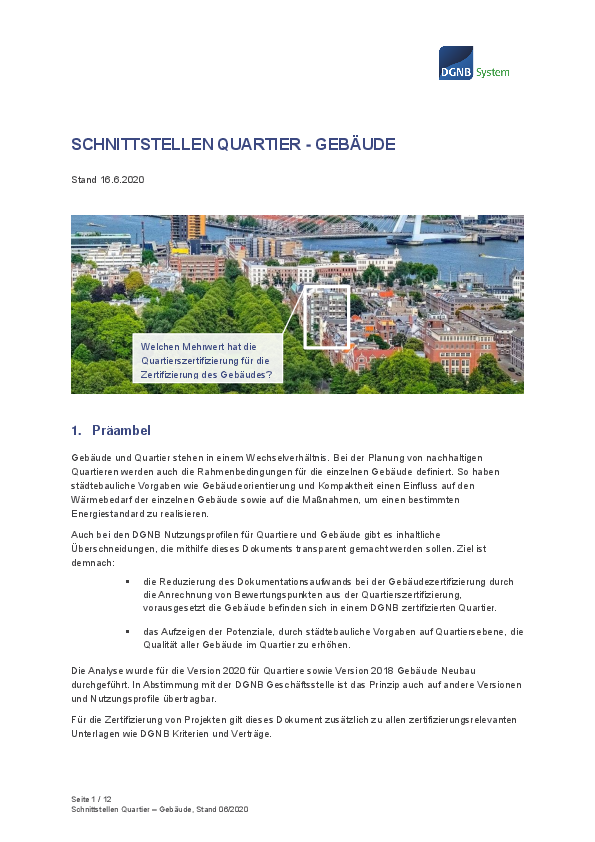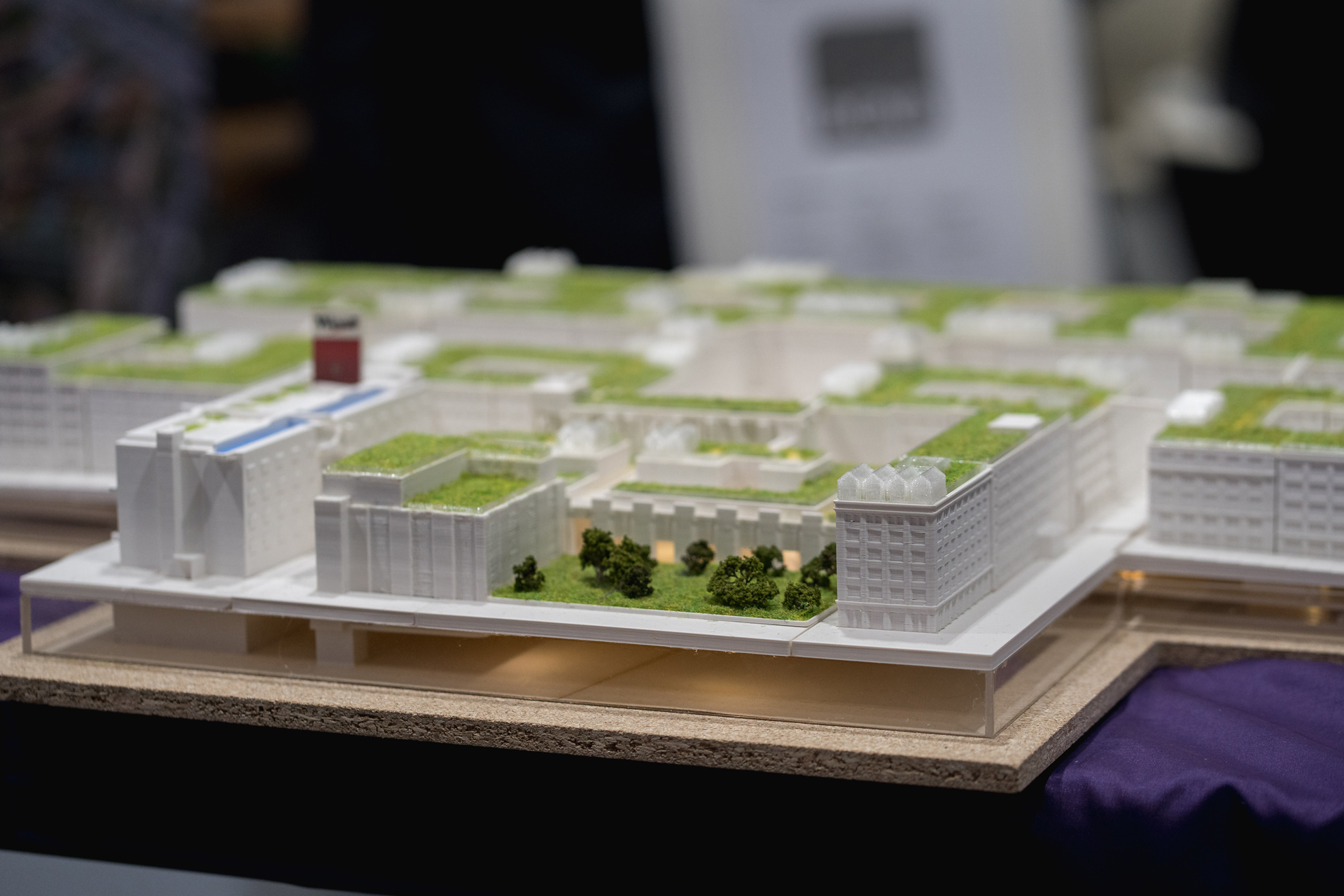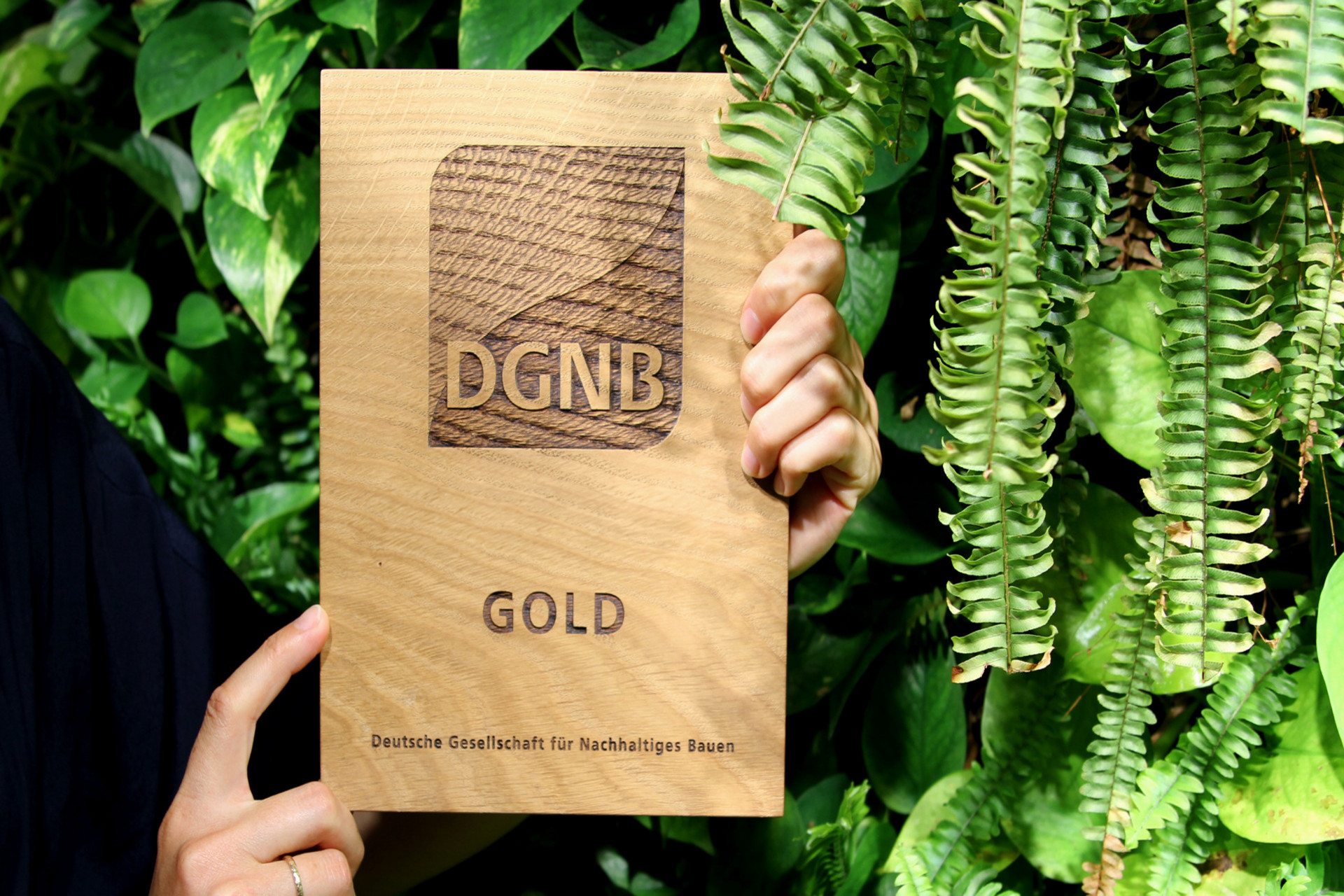The cities of tomorrow are being planned and built today. The development of sustainable, future-proof districts in which people can feel at home is therefore one of the key tasks of today's urban development: on the one hand, living and working spaces are growing ever closer together with increasing urbanisation. On the other hand, in times of climate change, scarcity of resources and social division, planning and development offices as well as municipal and institutional building owners have a special responsibility.
With the certification system for sustainable districts, the DGNB offers a globally recognised planning and optimisation tool that helps to implement holistic sustainability quality in a targeted, systematic and economical manner. It offers the right answers to our most important future questions for planning and building practice.
What matters for sustainable districts
The core topics include climate action, climate adaptation and resilience. In concrete terms, the certification supports the development of districts that cause the lowest possible CO2 emissions - in planning and construction as well as in later use. The urban and microclimate are considered as well as the environmental risks and the associated value retention of a district. A special focus here is on the promotion of biodiversity.
In addition, mobility, the circular economy and the subsequent users also play an important role: for example, environmental transport is to be encouraged and mobility management strategies for car-free neighbourhoods rewarded. Sustainable districts are also characterised by the promotion of thinking and acting in cycles when dealing with the resources and spaces used. Spaces with a high quality of stay and a good mix in the neighbourhood create greater acceptance and identification. This is additionally promoted by involving future users at an early stage during the planning, construction and operating phases.
The DGNB System meets the needs of every type of district
Since each district must fulfil different needs according to its primary use, the DGNB System for Districts takes into account seven different district types, which are referred to as schemes:
Event areas are characterised in particular by building complexes that are temporarily visited by many people. These can be sports and leisure facilities, exhibition areas or similar land uses. Through their entertainment and leisure, but also sometimes educational function, they make an important contribution to the attractiveness of a city.
Resorts and Vertical Cities
Pilot phase applications are available for Resorts and Vertical Cities. If you are interested, please contact us directly.
What criteria are used for certification?
The six criteria of environmental quality allow an assessment of the effects of districts on the global and local environment and the urban climate, as well as on the use of resources / recyclable materials through planning and construction.
- Life cycle assessment (ENV1.1)
- Pollutants and hazardous substances (ENV1.2)
- Urban climate (ENV1.5)
- Water cycle systems (ENV2.2)
- Land use (ENV2.3)
- Biodiversity (ENV2.4)
The eight criteria of socio-cultural and functional quality help to assess districts in terms of health, comfort and user satisfaction as well as essential aspects of the social and infrastructural mix.
- Thermal comfort in open spaces (SOC1.1)
- Open space (SOC1.6)
- Workplace comfort (SOC1.8)
- Noise, exhaust and light emissions / immissions (SOC1.9)
- Barrier-free design (SOC2.1)
- Urban design (SOC3.1)
- Social and functional mix (SOC3.2)
- Social and commercial infrastructure (SOC3.3)
The five criteria of technical quality provide a benchmark for assessing the quality of technical execution with regard to relevant sustainability aspects as well as the quality of mobility and its contribution to the sustainability of the district.
- Energy infrastructure (TEC2.1)
- Resource management (TEC2.2)
- Smart infrastructure (TEC2.4)
- Mobility infrastructure - motorised transportation (TEC3.1)
- Mobility infrastructure - pedestrians and cyclists (TEC3.2)
The seven criteria of process quality pursue the goal of increasing the quality of planning and planning participation as well as the quality of construction and operation of the district.
- Integrated design (PRO1.2)
- Participation (PRO1.7)
- Project management (PRO1.8)
- Governance (PRO1.9)
- Safety concepts (PRO1.10)
- Construction site / construction process (PRO2.1)
- Quality assurance and monitoring (PRO3.5)
Work aids for climate risk analysis and climate adaptation
- List of providers and products for professional climate risk services (assessment – management – reduction)
- Collection of freely available online resources on environmental hazards caused by climate – nature – civilisation
- Overview of possible adaptation measures for climate hazards (heat – drought | heavy rain – flooding | thunderstorms – hail)
- Strategic work aid incl. possible measures for local authorities to use in their heat action planning
Certification requirements
For certification according to the DGNB System for Districts, projects must fulfil the following requirements:
- The minimum size of an urban or business district, event area, commercial area and industrial site (hereinafter referred to as "district") is approx. 2 hectares of gross building land.
- The district consists of several buildings and at least two construction sites and has public or publicly accessible spaces and corresponding infrastructure.
- Specific to the urban district scheme: The residential share (measured in terms of gross floor area) should be between 10 and 90 percent; in an inner-city environment with complementary structures, the residential share can also be higher.
- Specific for the industrial site scheme: The site is predominantly used for industrial purposes and there is a natural or legal person who is responsible for the site.
- Specific for the commercial area scheme: The (planned) commercial area has a differentiated use structure; with two hectares at least two uses.
In all certification phases, the client is responsible for ensuring that there is no objection to the certification by the owners. This regulation applies to private land in the district or land owned by the public sector that does not serve the general public.
| Subject area | Criterion | Minimum requirement | Description |
|---|---|---|---|
| Nature conservation | ENV2.4 Biodiversity | 10 points | Indicator 2: Targeted measures for the active introduction of new and native species Urban Business Event Industrial Commercial |
| Climate | ENV1.5 Urban climate | 15 points | Indicator 1: Urban climate analysis of the district Urban Business Event Industrial Commercial |
| Social | SOC3.3 Social and commercial infrastructure | 5 points | Education |
| Process | PRO1.7 Participation | 15 points | Indicators 1-4 to ensure minimum citizen participation Urban Business Event Commercial |
Certification of districts
The DGNB System for Districts comprises a total of 31 criteria from five topics (environmental, economic, sociocultural, technical and process quality), on the basis of which the overall performance of a district is assessed. It should be noted that not every criterion is relevant for every scheme. The weighting of the individual criteria also varies depending on the district type. The DGNB provides the complete criteria set for districts online free of charge.
An auditor is required for registration for certification and the accompanying process. On our overview page you will find all the DGNB Auditors you can request for your project. You can find already certified projects here.
The certificate - Which project stages are certified?

The development of districts extends over a long period of time, during which the owners often change as well. Therefore, a distinction is made between a pre-certificate at the level of an urban design and a certificate for planning/development, for which at least the resolution for the development plan must be available and at least 25% of the development must have been carried out. Alternatively, in Phase II, the execution qualities can be contractually secured in accordance with the minimum requirements of the DGNB. The final stage is the certificate for the district that is at least 75% complete. The pre-certificate is valid for three years, the certificate for planning/development for five years. The certificate for the district remains valid indefinitely.
Specificity for industrial sites
The development of industrial sites extends over a shorter period of time compared to urban districts. Therefore, a distinction is made here between a pre-certificate at the level of a master plan or site development plan and a certificate for the site that is at least 75% complete. The pre-certificate is valid for three years and the certificate for five years. The site must be recertified every five years. If no major structural changes have been made, only a selection of criteria must be demonstrated again.
Project registration

To register a project, clients must first contract a DGNB Auditor. This auditor can then register the project. Auditors also accompany the entire process and take over the verification and submission to the DGNB. They are active worldwide and specialised in certain schemes.
Projects can be registered in the current market version "Districts, Version 2020".
Manual Project Registration (DGNB System Software) – in German
Selected DGNB certified projects
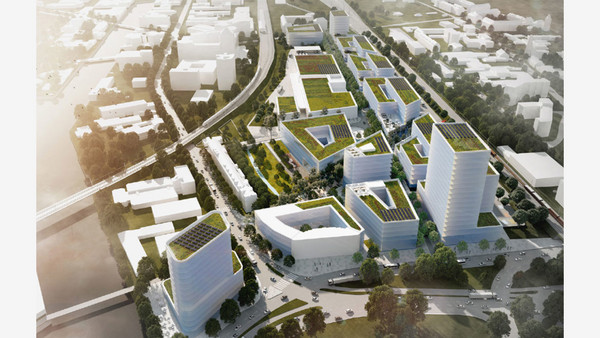
Commercial Areas
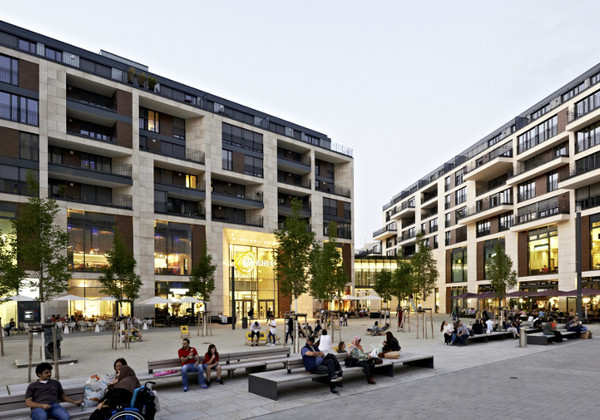
Urban Districts
Frequently asked questions
Currently, there is no standardised procedure for assessing and evaluating climate risks in buildings and real estate. Guidance is provided by the general guideline for assessing vulnerability and climate risks (DIN EN ISO 14091:2021-07), as well as regulatory requirements (e.g. the EU taxonomy) and approaches from private providers. There are no specifications as to which tools or providers are used to perform a climate risk analysis, e.g. for criterion SITE1.1 in the DGNB System or ESG Verification for the EU Taxonomy. Professional solutions, proprietary instruments or freely available sources can all be used. Further up on this page, you will find various work and guidance aids in the form of Excel documents for download, including:
- An overview with a selection of providers and products for climate risk services, which can help you choose a product that is suitable for your project (for the specific requirements of a taxonomy-compliant climate risk analysis, e.g. with regard to climate impacts and future data considered)
- A filterable overview of geo-portals and online resources on climate and environmental hazards (in case you are conducting the climate risk analysis yourself)
- A guide to possible climate adaptation measures across all subject areas
- A locally adaptable work aid for the specific challenge of heat protection planning at the municipal level, developed in cooperation with the 'Klimapositive Städte und Gemeinden' (Climate-Positive Cities and Municipalities) initiative.
Your contacts
For all enquiries, please send an email to our inbox.
Email: quartiere@dgnb.de

